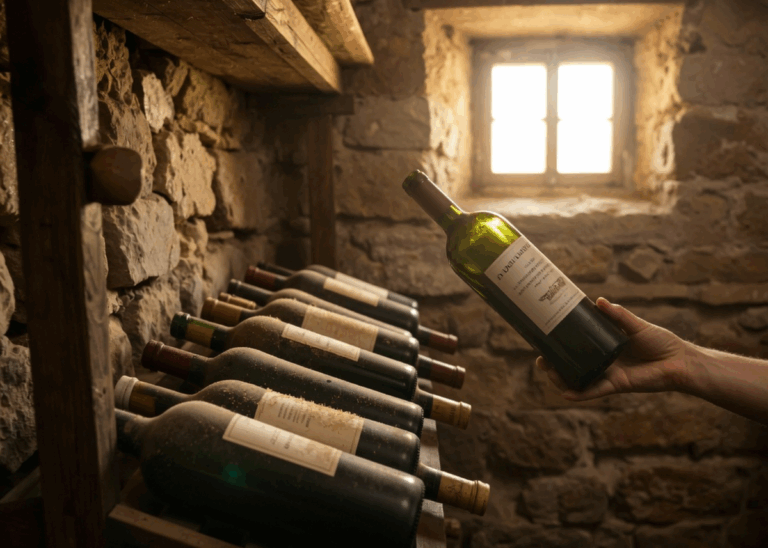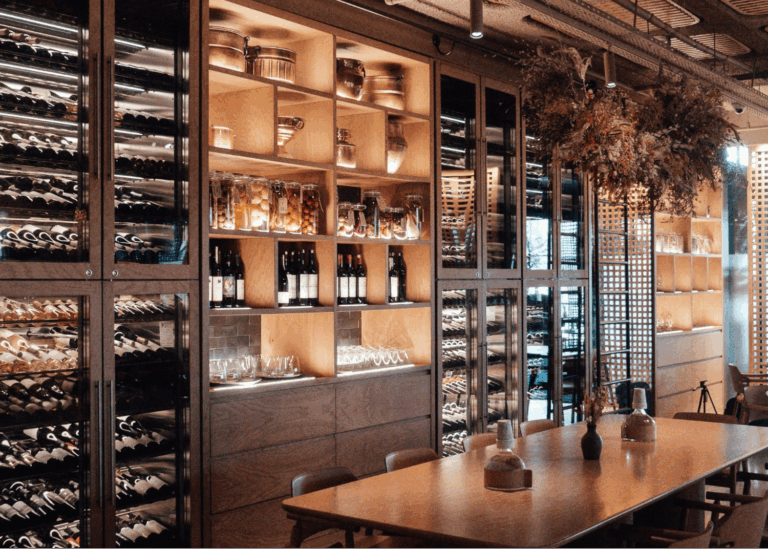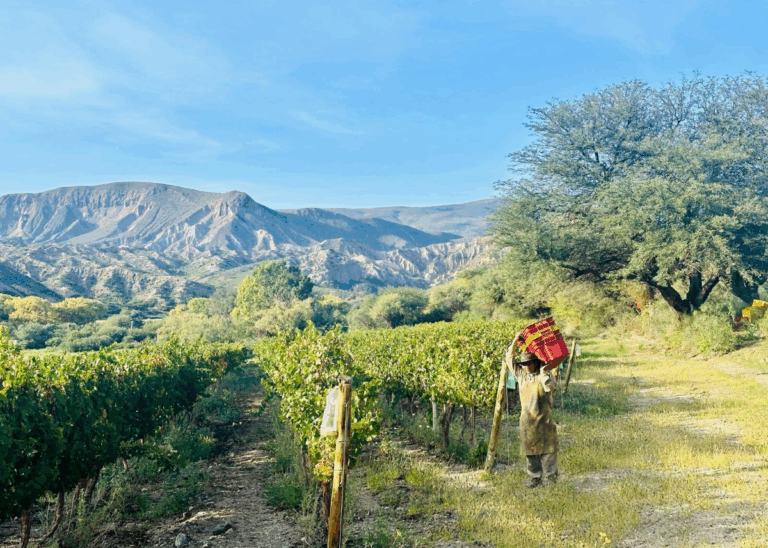[et_pb_section fb_built=”1″ _builder_version=”4.9.4″ _module_preset=”default”][et_pb_row _builder_version=”4.9.4″ _module_preset=”default”][et_pb_column type=”4_4″ _builder_version=”4.9.4″ _module_preset=”default”][et_pb_text _builder_version=”4.9.4″ _module_preset=”default”]
Last week, we talked Bordeaux, and specifically Le Médoc region – home to France’s most famous brands: Latour, Margaux, Lafite, Mouton.
But why is Bordeaux, and Médoc in particular, so highly regarded?
Most people assume it’s because the area produces the world’s best wines.
And yes, they are masters of cabernet sauvignon and merlot down there.
Many also assume it has to do with Bordeaux’s heritage – they’ve just been making wine there longer than anyone else.
Yes, the French winemaking tradition is old, dating back to the Roman Empire. But Médoc’s success is a fair bit less ancient than you might think. Until the 18th century, it was a swamp. It was only with the help of Dutch engineers that the lands to the north of Bordeaux were drained, leaving behind the exact kind of poor, gravelly soil that vignerons look for.
The truth is that Bordeaux’s wild success can be attributed as much to marketing as it can to the quality of the region’s wines.
More on that in a moment. But first, Julien investigates the differences between California’s Napa and Sonoma regions, including Napa’s biggest weakness, and why Julien might be just a bit biased…
[/et_pb_text][et_pb_video src=”https://www.youtube.com/watch?v=iO8XlHyWgcw” _builder_version=”4.9.4″ _module_preset=”default” width=”80%” width_tablet=”90%” width_phone=”95%” width_last_edited=”on|phone” module_alignment=”center” hover_enabled=”0″ module_id=”video” sticky_enabled=”0″][/et_pb_video][et_pb_text _builder_version=”4.9.4″ _module_preset=”default”]
Napoleon III, A Wine Marketing Genius (continued)
If there is any one person who deserves credit for creating the modern French brand, it is Louis-Napoléon Bonaparte. A nephew of Napoléon, Louis-Napoléon ran for and won the presidency of France after the revolution of 1848. Unable to seek the presidency a second time (presidents were limited to just one term in the Second Republic), he declared himself Emperor of the French, adopting the name Napoléon III.
Those wide boulevards in Paris, lined with plane trees and buildings designed by the architect Georges-Eugène Haussmann – Napoleon III put those there when he remade Paris in its modern form, starting in the 1850s.
Those strikes that paralyze French transport and schools every year – Napoléon III legalized strikes in 1866.
The embrace of avant-garde art – after the Academy of Fine Arts rejected works by Manet and Pissarro for the 1863 Paris Salon, Napoléon III intervened, saying “Let the public be the judge.”
Even some credit for the Eiffel Tower goes to Napoléon III – the tower was built for the fourth Paris Universal Exhibition, the first of which Napoléon III had inaugurated in 1855.
Does the year 1855 ring a bell, dear reader?
Next time you drink a Bordeaux, look for the following words on the label: “Classé en 1855.”
There is no more important ranking in French wine than the 1855 Classification, when 61 châteaux were ranked from Premier Cru (“first growth”) down to Cinquième Cru (“fifth growth”).
Putting “Premier Cru” or even, simply, “Grand Cru Classé 1855” (if you ranked lower than Second Cru) on the label immediately sets a wine apart from others on store shelves. (Who wants a wine that didn’t even make the cut?) Especially for the highest-ranked châteaux, the classification has acted as a protective moat on the market.
When you consider how the ranking came about, however, you realize that the difference between a Premier Cru, a Cinquième Cru, and an unclassified wine has very little – if anything – to do with quality.
At the 1855 Paris Universal Exhibition, Napoléon wanted to show off the best in French wine. He asked the Bordeaux châteaux to rank their wines from best to worst. When they demurred, the Bordeaux Chamber of Commerce got the gig.
But how does one rank wines? Especially so many wines.
The Chamber of Commerce used a simple metric: price.
The most expensive wines received Premier Cru and so on down to the Cinquième Cru. Any wine priced below that level was excluded, as were any châteaux outside Le Médoc (the sole exception being Château Haut-Brion of the Graves subregion in Bordeaux. Graves conducted its own classification ranking in the 1950s, giving Haut-Brion the rare distinction of having two Cru rankings).
It was the first great branding scheme in wine history, and forever changed the relationship of quality and price within the industry.
The four Premier Cru wines – Lafite, Latour, Margaux, Haut-Brion – are still among the most sought-after wines in the world today. A case of six 2014 Lafite reds (95 points, Robert Parker), retails for $5,000. Driving that price is, of course, the Lafite brand. Parker has given 90+ points to wines from our own Calchaquí Valley, indicating, at least to Parker’s palate, a comparable quality.
Such is the power of the Premier Cru classification that Baron Philippe de Rothschild, whose Mouton-Rothschild initially placed in the Second Cru, spent years lobbying the French government to elevate his wine to Premier Cru.
Despite the 1855 Classification being supposedly immutable, the government finally gave in in the 1970s, moving Mouton up to Premier Cru in the first and, so they say, last change to the Classification.
“Anyone can produce a great wine. But it takes a genius to sell it.”
Longtime Partnership members will recognize those words from Donald Hess, a neighbor of ours up in the extreme-altitude Calchaquí Valley at Argentina’s northwestern frontier.
The success of Bordeaux’s classification as a moat for its best brands establishes Napoléon III as perhaps the greatest wine salesman of all time.
Sadly, he was less adept in military and geopolitical matters. He failed to assemble a counterforce to meet Prussia’s expansion in Europe and a short war with the proto-German state ended in surrender at Sudan in 1870 (Bismarck would succeed in creating a unified Germany in 1871). When the news reached Paris, a group of politicians gathered at the city hall to declare a third French republic and the end of the Second Empire.
In a way, the 1855 Classification has proven similarly short-sighted. Château Petrus is one of the most expensive wines in the world today (if you can even find a bottle for sale); yet because the Bordeaux Chamber of Commerce stopped its rankings at the border of Pomerol (where Petrus is located), it has no Cru ranking at all.
Likewise, Saint-Émilion and Graves were also excluded. They conducted their own classifications in the 1950s (giving Haut-Brion the dual classification we mentioned earlier). The non-Médoc Bordeaux regions of Sauternes and Barsac also conducted their own classifications, but used a slightly different nomenclature. Their top level is Premier Cru Supérieur Classé, with Premier Cru denoting the level below that.
Yet, the 1855 Classification retains a certain mystique in the world of wine. It had the first-mover advantage in the modern wine age, where one looks to price as an indicator of quality.
Until next time…
The Wine Explorer
[/et_pb_text][/et_pb_column][/et_pb_row][/et_pb_section]



